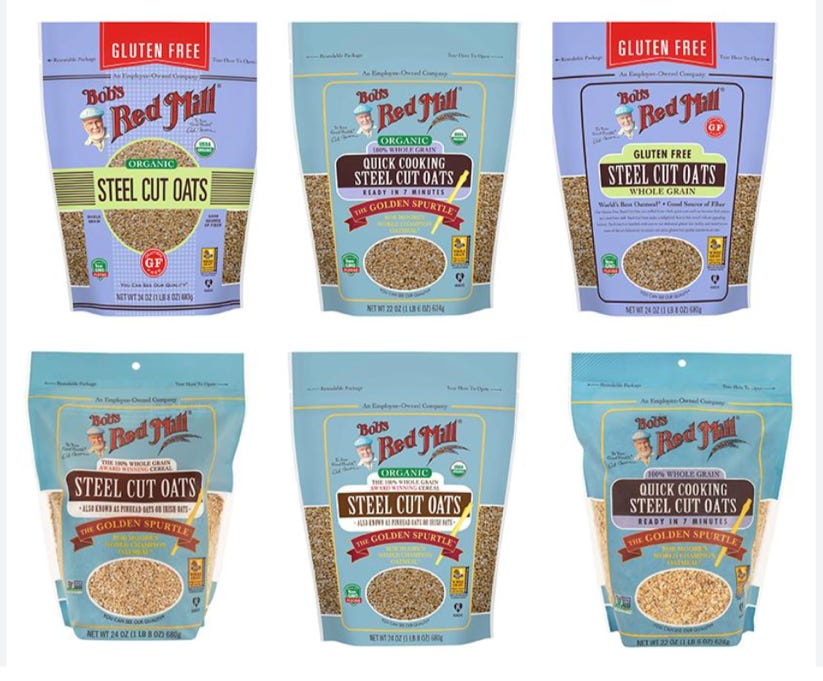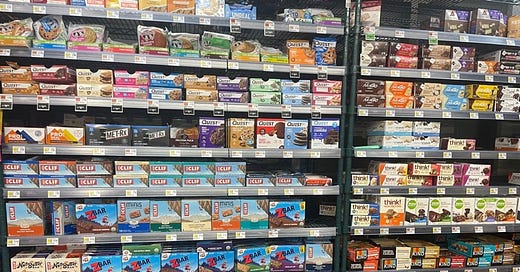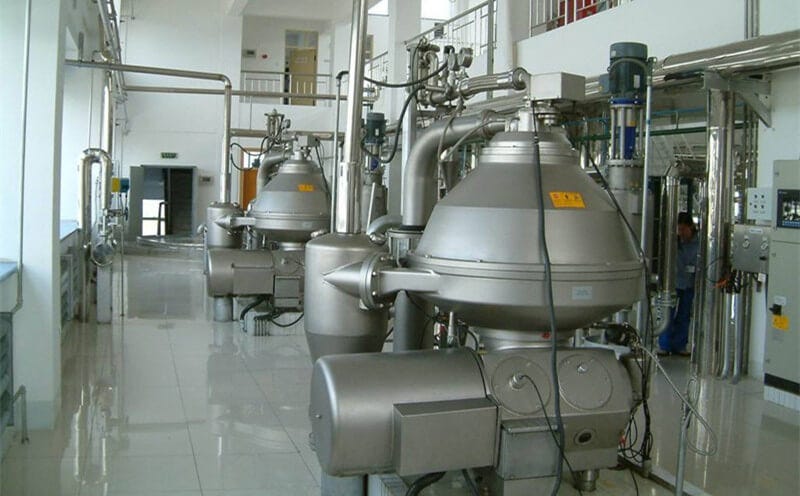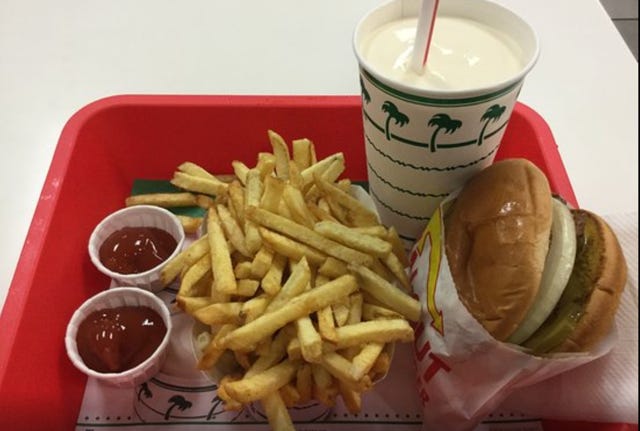Most Americans have grown up on junk food. We know what it looks like: cookies, crackers, sugary cereals sugary drinks, chips, Ho Hos, Cheese Whiz, Ding Dongs, Mars Bars, etc. And we’re not stupid, we know it’s bad for us. It further occurs to us, as we bottom out a jumbo bag of chips, that these foods might be addictive.
Junk food is now called “ultra-processed” (UPF) a term introduced by the Brazilian scientist Carlos Monteiro in 2010 to try to identify foods that undergo many processing steps, often with artificial ingredients, resulting in “food-like substances,” as Michael Pollan once described them.
The media have wholeheartedly taken up the term, putting out articles on UPFs nearly weekly (some UPF can be considered “predigested,” warned CNN.com, and others “trick our brains,” reported The Globe and Mail). Monteiro and now a world of nutrition authorities argue that these ultra-processed foods are the cause of our epidemics of chronic disease, in part because the rise in packaged, processed foods closely correlates with increased rates of these diseases, and this is true.
In 2014, Brazil became the first, and still only, country in the world to officially advise its citizens against UPFs, a move heralded by nutritionists as ground-breaking for focusing on real foods rather than the single nutrients – fat, protein and carbohydrates – that have historically been the subject of dietary research and guidelines. Hundreds of academic papers on UPF have now been written, and Monteiro’s entire food-ranking system, called “Nova” (available here), was embraced by the Food and Agricultural Organization (FAO) of the United Nations in 2019.
Nova has four categories: 1. unprocessed and minimally processed foods, 2. processed culinary ingredients, 3. processed foods (which retain some of their original identity), and 4. ultra-processed foods, or UPFs.
When I first heard of UPF’s, I assumed the terminology was relatively benign: a convenient, more scholarly sounding way to classify junk food. Yet now that the U.S. government is considering restricting these foods (more on this later), I believe that officializing Nova could do more harm than good. While it seems like a no-brainer to take any possible steps to reduce the ubiquity of junk food, UPF, as a category and a concept, has serious problems.
For one, ultra-processed foods defy definition, a fundamental ambiguity that makes the category of UPF open game for subjective interpretation, aka an invitation for corporate lobbyists to influence any potential government regulation. Even more concerning is that UPF, by blaming food processing as a main cause of disease, diverts our attention away from others aspects of our food that are far more probable causes of obesity, diabetes, and other chronic diseases.
To illustrate: according to Nova, a home-baked cookie is fine (merely “processed”), while a store-bought one is UPF. A large body of science now tells us that a cookie, due to its sugar and flour, is harmful, regardless of where it’s baked. This body of science is shining a light on how chronic diseases can effectively be reversed. Why travel down the murky path of UPF instead?
Run and tell the dairy maid—churning is processing!
When Brazil adopted Nova, I looked up the foundational paper and encountered my first doubts upon seeing category #2, “processed culinary ingredients.” This group lumps butter and salt, both ancient ingredients consumed by humans for millennia, together with industrial vegetable oils, even though butter can be made by shaking milk in a container (albeit for a long time), and salt, by evaporating sea water, whereas the equipment necessary for making seed oils, such as corn, safflower, and sunflower, is the following:
Having studied seed oils and visited a Bunge vegetable oil factory myself, I feel comfortable asserting that all these oils are industrial products, consumed by humans for only the last 80 years, and should be in the top category, #4, with other UPF, not grouped with butter and salt.
Speaking to Monteiro about these kinds of issues didn’t allay my concerns. In a 2017 interview, I asked him why a hamburger is considered ultra-processed food, when it’s little more than a meat sandwich? Other types of sandwiches--grilled cheese, for instance--are not listed as UPF. Monteiro told me that he considered hamburgers UPF because of the foods that they’re eaten with, i.e., shakes and fries. Guilt by association!
Ground beef might be bad for us (although I don’t think so), but to label it UPF due to its companion foods seems to violate every scientific principle I can imagine. Monteiro’s apparent bias against red meat is common among researchers in nutrition science today. However, the health claims against red meat are far from proven, making it a problem that this bias runs through the entire Nova system. Another example is that only “mechanically separated” meat is considered UPF, even though fruits and coffee beans undergo similar processes. (Machines are used to separate meat from the carcass and also to sever the skin, pulp, seeds, or pit from fruits and beans.) Similarly, “reconstituted meat products” such as sausages, are considered UPF, even though sausages have been eaten for millennia. You can read about them in Homer’s Odyssey, which describes “luscious goat sausages glistening on a grill.”
This anti-meat bias is invariably amplified by the media, which disproportionately illustrates articles on UPF with photos of meats rather than other, more abundant UPFs, such as soft drinks, cookies, crackers, cakes, chips, ‘instant’ soups, pasta and pizza dishes, noodles, or desserts.
Let the government decide?
These problems are now coming to roost since a little-known but influential group (the Dietary Guidelines Advisory Committee) is reviewing the science on ultra-processed foods and obesity, for the next update to our nation’s dietary guidelines, due out next year. If this committee were to advise against UPF in its report expected this summer, our guidelines could well recommend limiting these foods. (Food companies are predictably “marshalling a defense,” according to the Wall Street Journal.)
Federal agencies are required by law to follow these guidelines, which means the policy has an outsized impact on public schools, military mess halls, feeding programs for the elderly and the disadvantaged, among others. If a limit on UPF were to be recommended, we might finally be able excise Doritos and Tostados from public school lunches or Dora the Explorer cereal from the food baskets provided to women and infant children by the government’s WIC (The Special Supplemental Nutrition Program for Women, Infants, and Children) program.
Further, we can all probably agree that the U.S. food supply is in acute need of a push in the less-processed direction. The American version of a product almost always has more ingredients than its European counterpart. Maybe regulation would nudge U.S. manufacturers towards healthier products.
If the government does step into the UPF ring, however, Nova’s ambiguity and anti-meat bias could well lead to misguided policies. It’s quite possible, for instance, that public schools would keep the Doritos but remove lunch meats, which however imperfect, remain an important source of protein for growing children. Serving kids unprocessed beans instead (an incomplete protein, high in carbohydrates), although in Nova category #1, would not be a win for health.
UPF: Ultra-confusing
The basic ambiguity of the UPF definition is a minefield for any government effort and isn’t doing nutrition science any favors either. A lack of precision is unfortunately an invitation for experts—and our policy makers—to define ultra-processed based on their own preconceptions or biases.
The formal, short version of Nova’s UPF definition is here:
Formulations of ingredients, mostly of exclusive industrial use, that result from a series of industrial processes (hence ‘ultra-processed’), many requiring sophisticated equipment and technology. Processes enabling the manufacture of ultra-processed foods include the fractioning of whole foods into substances, chemical modifications of these substances, assembly of unmodified and modified food substances using industrial techniques such as extrusion, moulding and pre-frying, frequent application of additives whose function is to make the final product palatable or hyper-palatable (‘cosmetic additives’), and sophisticated packaging, usually with synthetic materials. Ingredients often include sugar, oils and fats, and salt, generally in combination; substances that are sources of energy and nutrients but of no or rare culinary use such as high fructose corn syrup, hydrogenated or interesterified oils, and protein isolates; cosmetic additives such as flavours, flavour enhancers, colours, emulsifiers, sweeteners, thickeners, and anti-foaming, bulking, carbonating, foaming, gelling, and glazing agents; and additives that prolong product duration, protect original properties or prevent proliferation of microorganisms. Processes and ingredients used to manufacture ultra-processed foods are designed to create highly profitable products (low cost ingredients, long shelf-life, emphatic branding), convenient (ready-to-consume) hyper-palatable snacked products liable to displace all other NOVA food groups, notably group 1 foods.
Grade-school science tells us that a term must be precisely defined before it can be studied. For instance, if I’m trying to establish whether exercise puts people in a “good mood,” I’d better have a precise definition of “good mood” before doing an experiment, since one person’s definition will differ from another’s. But even a brief tour of the term UPF shows it to be fundamentally lacking in precision.
UPF’s definition uses words like “mostly” and “many” without further specification. How many ingredients made with “sophisticated equipment and technology” must a food item contain to make it UPF? “Many” probably means more than just a few, but exactly what percent of of the total ingredients, we are not told. Likewise, UPF ingredients “often” (but not always) “include sugar, oils and fats, and salt,” although we’re not given the minimum amount of grams or proportion that is considered harmful. Even the very first word of the definition, “formulations,” is open to many interpretations, as an article critical of UPF in the American Journal of Clinical Nutrition noted in 2017.
The authors of that article, from institutions in Ireland and Singapore, point out that several other food classification systems already exist with far greater definitional precision. The European Food Safety Authority, for instance, has a system called “Foodex2,” and another system, “LanguaL” has also been adopted in Europe. By comparison, Nova is “a rather simple and crude system,” the authors write.
Another source of confusion is that UPF includes
“substances that are sources of energy and nutrients but of no or rare culinary use such as high fructose corn syrup, hydrogenated or interesterified oils, and protein isolates; cosmetic additives such as flavours, flavour enhancers, colours, emulsifiers, sweeteners, thickeners, and anti-foaming, bulking, carbonating, foaming, gelling, and glazing agents…”
These are just examples. Anyone could riff on this. The Washington Post, for instance, recently informed us that any ingredient ending in “ose,” such as dextrose or fructose, is UPF, because these are sugars. And this idea makes sense, since Nova tells us that UPFs include “varieties of sugars.” But fruit also contains both glucose and fructose (as well as the two bonded together in sucrose), so fruit is apparently UPF.
And what about fruit juice: lemonade, for instance? If I buy it from the store, sweetened with high fructose corn syrup, that would make it a UPF. But If my kids make it to sell at a lawn sale and sweeten it with sugar – same calories, roughly the same proportion of fructose and glucose -- it’s not.
Intentional harm
University of College London associate professor Chris Van Tulleken, who interviewed leading experts in the field for his best-selling book, Ultra-processed People, was himself unable to arrive at any exact definition for UPF. In his search for hard principles, he prioritizes the intentionality behind a food product. If it’s “designed to create highly profitable products…, convenient (ready-to-consume) hyper-palatable snacked products,” he writes, then it’s UPF.
Assuming that all food companies desire “highly profitable products” (see “capitalism”), this criteria implicates the entire food industry, even those producers of fruits and vegetables that package and brand their products, like “Cuties” clementines. Maybe some noble-minded companies don’t want people eating too much of their products, but relying on consumers or nutrition scientists to get into hearts and minds of those companies seems like a lot to ask. Maybe we should just play it safe and eat bland food in unattractive packages.

Ultimately, Van Tulleken says that his “personal rule of thumb” is that when he’s “struggling” whether to call a food UPF, “then it probably is UPF.”
Last week, FDA Commissioner Robert Califf recognized this complexity when he was reported in the newsletter Food Fix to say that ultra-processed foods are “one of the most complex things I’ve ever dealt with. Drugs are easy – you know the dose of what you’re taking. Ultra-processed food is a complex combination of things that we’ve got to figure out.”
A return to homesteading and hand-ground flour
If we need more reason for concern, consider that Nova can be used to condemn nearly the entirety of our existing food supply. Its warning against “fractioning,” for instance, eliminates peeled potatoes, milled flour, husked corn and shelled nuts. “The production of almost all foods involves some fractionation,” a British nutritionist observed already in 1977. Separating out the edible from the inedible part of the plant is obviously an important, longstanding part of human agriculture that has allowed us to consume only what our bodies can easily digest. Even before industrialization, this type of processing would have been done by hand. Do we really think it’s better for our health or remotely realistic to spend time milling flour at home? And does the process of fractionation alone make a food unhealthy? By that standard, shelled nuts and seeds are bad for us.
“Pre-frying” is another term that seems to needlessly eliminate foods. Foods like potatoes can be partially fried food at home, reducing the amount of time needed to finish the dish later on. This is hardly an “industrial technique,” but according to Nova, if pre-fried potatoes are produced en masse, and served in a commercial setting, like McDonald’s, then they’re UPF.
We can probably agree that cooking from scratch is best, yet the Nova system is predicated upon a bygone, nostalgic idea that Americans are still mostly living in intact families with a parent at home to prepare meals. Or, that we have housekeepers to cook for us. Or that we can, like the French, make daily rounds of local markets. This is far from the American reality, especially for disadvantaged people working multiple jobs who have little time to shop and may well rely upon baked beans or, gasp!, frozen pizza (both UPF) as the family meal ticket. In an imperfect, time-stressed world, we need those packaged and pre-cooked foods with a long shelf life for our lives to function
The reality is that humans have for millennia been preserving foods for future use. Salting and curing meats, drying fruits, and pickling vegetables are some examples. Since we no longer live like the characters in Little House on the Prairie, companies do this for us. But Nova suggests we need to revert to our 19th century ways. The millennial homesteading movement aside, let’s be real. This is not happening.
The danger of UPF
Most concerning is the fact that in a world heavily burdened by chronic disease, UPF tells us little about which foods to select for better health. Once we have avoided the central supermarket aisles, full of those alluring boxes, bottles and bags, UPF has no advice on where to head next: to the produce section for fruits and vegetables? To the meat and dairy aisles? The answer to that question is not only crucial for avoiding disease but also at the heart of our current diet debates, i.e. do we go vegan or carnivore or somewhere in between? UPF provides no answers.
Worse, a focus on UPF diverts us away from the science that could provide answers. I’m talking about the large and fast-growing body of science on carbohydrate restriction, aka, the low-carb or ketogenic diet.
A frequent criticism of this research is that it’s reductionist, since it focuses on those same macronutrients (fat, protein and carbohydrates) that “whole food” UPF-advocates are trying to leave behind. The failure of the reductionist low-fat diet has caused nutritionists to think they should renounce reductionism entirely. But the low-fat diet’s demise does not mean that all nutrient-focused science is wrong. Actually, this science is making great progress. Carbohydrate restriction has revealed evidence-based strategies for reversing type 2 diabetes, high blood pressure, and mental health illnesses, among other conditions.
Rather than pay attention to this scientific literature, however, most nutrition experts prefer to zoom out their focus to ultra-processed foods instead. This approach may sound more holistic, but it’s far less precise and produces less meaningful, less reliable knowledge.
The cookie example above shows us how Nova can lead us astray. Here’s another example:
These bars all have strange sounding ingredients and are obviously UPF (we know it when we see it!). However, the first has 13 grams of carbohydrate per bar, while the latter two have 31 and 32 grams, respectively—more than twice as much.
The science on low-carbohydrate diets tells us that keeping blood sugar low is key for fighting metabolic diseases and so, would point you to the Love Good Bar. The fewer the carbohydrates, the less the sugar, the better1. Nova makes no distinction. Actually, by Nova standards, the Snicker’s bar, with the shortest and least strange-looking ingredient list, looks best, even though it contains the most sugar. In all, while it’s probably a good idea to avoid these kinds of bars altogether, a busy parent who needs to pack lunches for overweight children would be best informed by the low-carbohydrate science, not Nova.
What does the science on UPF actually say?
Does the UPF classification improve upon current nutrition knowledge at all?
The Danish obesity expert and nutritionist Arne Astrup answered a firm “no” to that question, in the only significant discourse on UPF I’ve seen in print. Astrup’s 2022 article was published in the American Journal of Clinical Nutrition (AJCN) as part of the journal’s “Great Debates on Nutrition,” Monteiro gave a defense of Nova, arguing that its ready to be elevated to the level of policy. Astrup picked it to pieces. Monteiro’s Nova classification system, he wrote, is “unnecessary, because the main determinants of chronic disease risk are already captured by existing nutrient profiling systems,” such as fat, carbohydrate and protein, and Nova is “counterproductive to solve the major global food production challenges.”
Astrup’s case is that even the health dangers associated with UPFs have not been well substantiated. All the definitional problems of UPF described above are exacerbated in attempts to study the health effects, since the majority of existing food data bases, such as Harvard’s famous Nurses Health Study, do not collect information on processing, packaging, ingredients, or other UPF elements. Research teams must decide how to classify the food items in their own data bases and then see if these items are associated with various diseases. UPF have now been found, in observational studies, to be associated with obesity, cancer, diabetes, and poor mental health. (I’ll address the claim that UPF are uniquely addictive in a future Substack.)
These associations from observational studies are fraught, however, because they cannot tell us with any certainty if the UPFs themselves are causing the poor health, or if other lifestyle habits or attributes typical of UPF-eaters, technically called “confounders,” are to blame. People who rely heavily on UPF tend to be of lower socio-economic status, with less time to exercise (and to cook), less access to health care and many other challenges that are themselves linked to poorer health. Indeed, a study in Brazil found that UPF-eaters were more likely to eat in front of a screen.
By contrast, wealthier people, with their time to cook and resources to be health conscious, are likely to eat fewer UPFs, while being more likely to exercise, abstain from smoking, and engage in social events, all of which are linked to better health. They’ll also have better health care. This “healthy user effect” captures the many ways that health-conscious people differ from less health-conscious people, and it’s just not possible for researchers to account for all these differences, many of which can’t even be measured. This problem plagues all observational studies and is the reason why the data they produce are generally characterized as “low-certainty” evidence.
More reliable evidence comes from clinical trials, because these can actually establish cause and effect. Yet here, we find only one well-controlled trial on UPF, published in Cell Metabolism in 2019.
Using a two-week cross-over design, a team of researchers at the National Institutes of Health led by Kevin Hall found that people eating a UPF diet increased energy intake (i.e., they ate more) and gained more weight compared to subjects on an unprocessed food-based diet. This experiment has received a lot of media attention, but such a short-term trial is not predictive of longer-term weight gain. End of story.
The lack of longer-term experimental evidence means that the science on UPF is not even out of the starting gate, much less ready for population-wide policy.
At the heart of UPF’s popularity and the science itself is that it just seems to make sense. The proliferation of these foods in every possible setting has occurred in the same years that we’ve seen an explosion in obesity and diabetes, and we know that folks are eating a lot of junk food. But we first need to know what makes it harmful – the processing, the number of ingredients, the sugar, flour, fat, salt, vegetable oils (pick your poison) that it contains – before we legislate against it.
So let’s stick with “junk food.” We don’t need ambiguous, multi-syllabic terminology to identify it. Like Supreme Court Justice Potter Stewart famously said with regard to pornography, “I know it when I see it.” Isn’t that enough?
Many low-carbohydrate experts advise counting not total carbohydrates but “digestible carbohydrates,” which are the total grams of carbohydrates minus the grams of (non-digestible) fiber. Digestible carbs are also called “net carbs.” The digestible carbohydrates in these bars are, in the order presented above, 5, 28 and 31 grams, respectively.









The Nova rating system is based on associations, not experiment. Rating foods, processed or otherwise, according to saturated fat content is about as helpful as rating beverages according to water content. Excerpt: "Conclusions - Saturated fats are not associated with all cause mortality, CVD, CHD, ischemic stroke, or type 2 diabetes..." https://pubmed.ncbi.nlm.nih.gov/26268692/
Obesity researchers are trying to understand what causes some obese individuals to be metabolically healthy. Here's a clue. "Separately, on analyzing global COVID-19 mortality data and comparing it with 12 risk factors for mortality, they found unsaturated fat intake to be associated with increased mortality. This was based on the dietary fat patterns of 61 countries in the United Nations' Food and Agricultural Organization database. Surprisingly, they found saturated fats to be protective." https://www.medpagetoday.com/reading-room/aga/lower-gi/86940
When researchers find that saturated fats furnish health benefits, they invoke paradox. "Obesity sometimes seems protective in disease. This obesity paradox is predominantly described in reports from the Western Hemisphere during acute illnesses. Since adipose triglyceride composition corresponds to long-term dietary patterns, we performed a meta-analysis modeling the effect of obesity on severity of acute pancreatitis, in the context of dietary patterns of the countries from which the studies originated. Increased severity was noted in leaner populations with a higher proportion of unsaturated fat intake." https://www.ncbi.nlm.nih.gov/pmc/articles/PMC7846167/
Excellent piece! I agree that the Nova classification system is a muddy mess. If it's adopted by The Powers That Be (h/t Outside the Lines) the junk food behemoths will immediately start slapping it on their products. They've already done this with foods labeled "Keto", but having seed oils and/or sugar under one of its many pseudonyms. If we're going to do something on a national scale, how about banning high fructose corn syrup? Just doing that might cut back on kids with Non-Alcoholic Fatty Liver Disease.